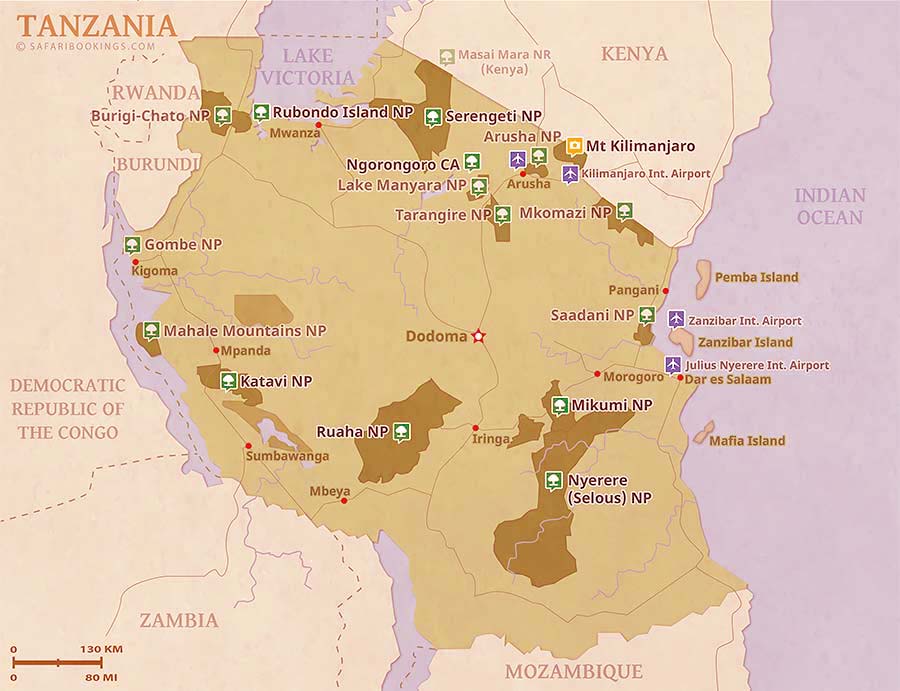Rongai 7 Days Climb
Kilimanjaro, the highest mountain in Africa
One of the simplest and least-traveled paths, with a very high success rate. Just south of the Kenyan border, on the mountain’s north flank, is where the journey begins. Climbers can observe the peak from a variety of vantage points because the descent is down the Marangu path on the mountain’s southern flank. From Moshi, the drive to the trailhead takes roughly 2.5 hours.
Day 1 – Drive to Kilimanjaro National Park Rongai Gate (Nale Moru), Hike to Simba Camp
Drive for around two hours, including a stop at Marangu to obtain permissions, to the charming wooden town of Nale Moru. You’ll start the trip on a broad trail that passes through potato and corn farms before entering a pine forest. The first camp lies at the edge of the moorland zone with wide views of the Kenyan lowlands as the forest starts to thin out.
Lunch, Dinner
Day 2 – Hike Simba Camp to Second Cave
Walking to the Second Cave in the morning offers wonderful views of Kibo and the Eastern ice fields on the crater rim.
Breakfast, Lunch, Dinner
Day 3 – Hike Second Cave to Kikelewa Camp.
After breakfast, the ascent towards Kibo continues, and at about 3600 meters, it reaches Kikelwa Cave. You start to feel like you’re on a pretty enormous mountain as the views start to open up! Water can be found in the creek that is clearly visible below the cave, although you might need to go a little bit downhill to get there. Sleep at the Third Cave camp (Kikelewa Caves).
Breakfast, Lunch, Dinner
Day 4 – Hike Kikelewa Camp to Mawenzi Tarn
The views are spectacular in return for a short but arduous hike up grassy slopes. Before you arrive to the next camp at Mawenzi Tarn, which is magnificently located in a cirque immediately beneath the towering spires of Mawenzi, leave the vegetation behind. The afternoon will be free for you to relax or tour the neighborhood to help you acclimate.
You will set up camp here for two nights if you are staying up the mountain for an additional day. For your acclimatization hike, you can hike up and around Mawenzi.
Breakfast, Lunch, Dinner
Day 5 – Hike Mawenzi Tarn to Kibo Hut
To get to the Kibo campground at the base of the Kibo crater wall, go across the lunar desert known as the “Saddle” between Mawenzi and Kibo. Resting up for the final ascent early in the morning will take up the remainder of the day.
Breakfast, Lunch, Dinner
Day 6 – Kibo Camp to Summit and Horombo Hut
Start your ascent to the summit very early in the morning by making your way up to Gilman’s Point, which is located on the crater rim at an elevation of 5700 meters (18,700 feet). The highest peak in Africa, Uhuru Peak, is where we will eventually arrive. This climb starts out in the dark, necessitating the use of headlamps or flashlights.
You will need all of your warm garments because it will be really cold until you start descending.
With numerous switchbacks, this is by far the hardest part of the hike. After that, we will descend and halt at Kibo for lunch and a break before moving on to the Horombo camp.
Breakfast, Lunch, Dinner
Day 7 – Hike Horombo Hut to trailhead, drive to Moshi
After breakfast, a steady descent takes us down through moorland to the Mandara Hut. Continue descending through lush forest path to the National Park gate at Marangu. At lower elevations, it can be wet and muddy. Gaiters and trekking poles will help. Shorts and t-shirts will probably be plenty to wear (keep rain gear and warmer clothing handy).
Our vehicle will meet you at Marangu gate to drive you back to your hotel in Moshi (about 1 hour).
Breakfast
Includes
- Park fees (For non-residents)
- All activities (Unless labeled as optional
- All accommodation (Unless listed as upgrade)
- A professional driver/guide
- All transportation (Unless labeled as optional)
- All Taxes/VAT
- Roundtrip airport transfer
- Meals (As specified in the day-by-day section)
Excludes
- International flights (From/to home)
- Additional accommodation before and at the end of the tour
- Tips
- Personal items (Souvenirs, travel insurance, visa fees, etc.)
- Government imposed increase of taxes and/or park fees
- Some meals (As specified in the day-by-day section)
- Drinks
Activities & Transportation
- Activities: game drives
- Game drives: pop-up roof 4x4 vehicle
- Getting around: pop-up roof 4x4 vehicle
- A transfer from and back to the airport is included

